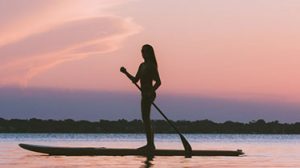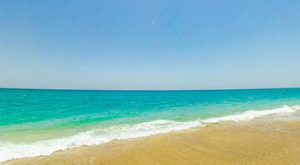Martin County is a destination that’s full of fun facts, captivating tidbits, and even some surprising secrets! Lots has unfolded on our shores since we were officially founded nearly 100 years ago in 1925. From historic happenings and quirky events to little-known factoids, here are some of our favorites (in no particular order). Be sure to let us know if you think there are any others that should be added to the list!
Our Shores are Seriously Unique
Martin County is home to the most bio-diverse lagoon ecosystem in the Northern Hemisphere! Situated between the Atlantic Ocean and the Indian River Lagoon, the St. Lucie Inlet is also the most bio-diverse estuary in North America. Our unique ecosystem provides a habitat for over 4,300 species of plants and animals, including more than 30 threatened and endangered species.
We’ve Got Space to Seriously Spread Out
Thanks to our charming coastal location, we have lots of space for our visitors to spread out and relax. Martin County boasts more than 22 miles of uncrowded beaches (which remain so serene thanks to a county-wide, four-story height restriction that prevents towering hotels or condo buildings from overshadowing our shores). We also offer more than 100,000 acres of parks and conservation lands, with 77 parks in total.
Speaking of Parks…
Martin County happens to be home to a particularly special park. Tucked away in Hobe Sound, visitors will find Jonathan Dickinson State Park – the largest state park in southeast Florida! The park teems with wildlife in 16 natural habitats including sand pine, scrub pine, flatwoods, mangroves, and river swamps. The Loxahatchee River, Florida’s first federally designated Wild and Scenic River, also runs through the park. Explore the natural wonders and historical interests, including a secret World War II training camp and Trapper Nelson’s 1930s pioneer homestead.
Presidents Love to Fish Here
Stuart is renowned for its world-famous fishing, but five presidents were particularly fond of the pastime! Those presidents include Grover Cleveland, Chester A. Arthur, Theodore Roosevelt, Howard Taft, and Warren G. Harding. According to “A Treasure We Call Home” by Rick Crary, Cleveland was actually an accidental tourist, visiting Stuart while en route further south, but he fell in love with our waters. Cleveland loved fishing in Stuart so much that he returned numerous times, and even purchased waterfront land in 1905 (where City Hall stands today).
Multiple TV Shows and Movies Have Filmed Here
Our little slice of paradise has been featured in multiple television shows and movies over the years. Some of the more well-known examples include Robinson Crusoe (1916), Yankee Doodle Dandy (1942), Gentle Giant (1967), and Empire of the Ants (1977). Interested in learning more? Then be sure to check out our recent blog post, “Binge-Watching In Quarantine? Connect With Martin County With These Movies!”
In Fact, We Have Some Really Famous Former Residents
Plenty of famous people have lived in Martin County over the years, ranging from actors and athletes to artists, musicians, politicians, and more. While we won’t mention anybody who still lives here, one our most beloved residents was Francis Langford. Born in 1913, she rose to fame during the Golden Age of Radio and appeared in 28 films during her illustrious career. Although she passed away in 2005, her legacy lives on as one of Martin County’s most philanthropic residents, with many attractions dedicated in her honor.
Jensen Beach is Known as the Pineapple Capital of the World
John Laurence Jensen emigrated from Denmark to Florida in 1888. When he arrived, he set up his pineapple plantation here, which eventually became the town of Jensen. A mere 14 years later, Jensen was shipping over 1 million boxes of pineapples each year during the June and July season, earning the town the name “Pineapple Capital of the World.” Stuart, on the other hand, is recognized by multiple monikers, including the “Sailfish Capital of the World” and “America’s Happiest Seaside Town.”
The House of Refuge is Truly Iconic
The House of Refuge is the oldest structure in Martin County and is the only remaining building out of the 10 original houses of refuge that once dotted Florida’s treacherous eastern coast. These lifesaving stations were purpose-built to serve as safe havens for shipwrecked travelers. Managed by the Historical Society of Martin County, it’s now home to a museum has been restored to showcase historical lifesaving equipment and the Keeper’s living quarters as they were in 1904, full of authentic artifacts and colorful tales from a bygone era.






